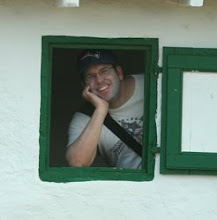Cape Cod Day 5: Cape Cod Museum of Natural History (8/1)

The tides were right on Wednesday so we decided to spend the morning walking on the mud flats near the Cape Cod Museum of Natural History in Brewster, MA. We parked in the museum parking lot and hiked down to the beach. As we crossed the wood bridge that spans the area which floods easily we spotted several Ospreys sitting on the platforms. Apparently the museum has web cams set up to observe these birds during the summer.
When we got down to the beach we quickly took off our shoes and socks and headed for the water. My sister and I really enjoy exploring the flats and we quickly found lots of wildlife. Our first major find was a shell just sticking out of the water. Not wanting to get pinched, I used a piece of plastic to coax the crab out of the sand. To our surprise, it was actually a pair of crabs who were obviously in the process of mating. The bottom crab (the female?) was huge and assumed an aggressive posture with claws out in front of her body. Not wanting any trouble, we left the pair alone and they quickly dug themselves back into the sand.
Those weren't the only crabs around. We actually found several of different colors. I was able to photograph this one before he took shelter. There were other invertebrates as well. We found several large Hermit Crabs which I picked up to see if I could get a good shot of their bodies. The crab would curl up tight into his shell and then, as if he was curious what was happening, he would stick his head out again.
When we got down to the beach we quickly took off our shoes and socks and headed for the water. My sister and I really enjoy exploring the flats and we quickly found lots of wildlife. Our first major find was a shell just sticking out of the water. Not wanting to get pinched, I used a piece of plastic to coax the crab out of the sand. To our surprise, it was actually a pair of crabs who were obviously in the process of mating. The bottom crab (the female?) was huge and assumed an aggressive posture with claws out in front of her body. Not wanting any trouble, we left the pair alone and they quickly dug themselves back into the sand.
Those weren't the only crabs around. We actually found several of different colors. I was able to photograph this one before he took shelter. There were other invertebrates as well. We found several large Hermit Crabs which I picked up to see if I could get a good shot of their bodies. The crab would curl up tight into his shell and then, as if he was curious what was happening, he would stick his head out again.
We also found lots of Moon Snails. These guys were easy to uncover, you just had to follow the trails in the sand. They were everywhere.
By this time we were pretty far out. We spotted some birds foraging in the flats and spent a few minutes identifying them. We saw Ruddy Turnstones, Semi-palmated Plovers, Black-bellied Plovers, and lots of gulls. As we watched, more and more birds peeled off the flock and flew away. Before we knew it the sand flats were all covered with water and we had to move fast to avoid being overcome by the incoming tide.
-----
After getting back to dry land we put on our shoes and headed over to the museum. We had visited before but this time they had an exhibit on Rachel Carson. Rachel is thought by many to have launched the modern environmental movement with the publication of her book "Silent Spring". The book documented the effects of pesticides on humans, animals, and the Earth itself. Even though it was written in the early 60's, the book is still relevant today and I'd strongly encourage you to read it if you haven't yet.
-----
The museum had a very nice exhibit on Rachel. There was a display of some of her personal effects and examples of her beautiful writings on the natural world. My Mom and I found this one particularly heartfelt.
-----
They also showed a documentary on Rachel's life. Known as a gifted nature writer, Rachel devoted several years of her life to investigating and documenting the effects of DDT and other pesticides. When the book came out, she was attacked by the chemical industry which sought to discredit her work. She actively defended her research all while battling cancer (the horrible disease that eventually took her life). What an incredible woman.


